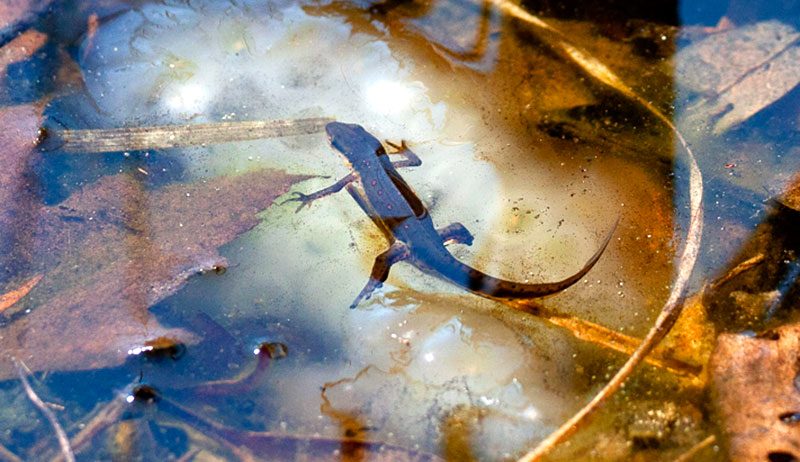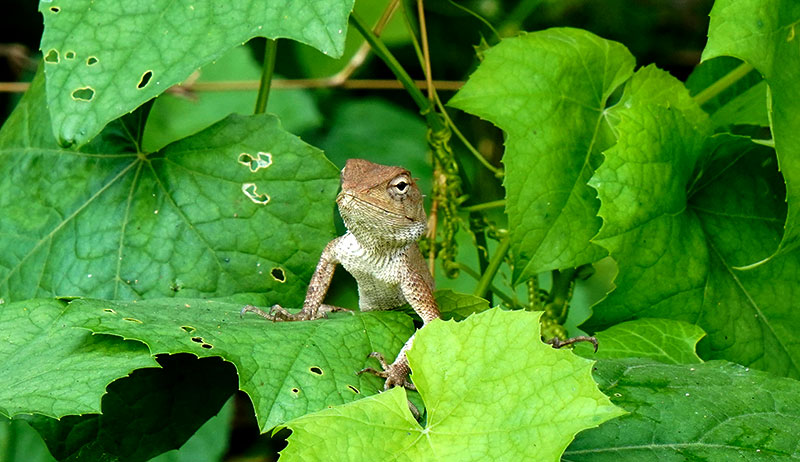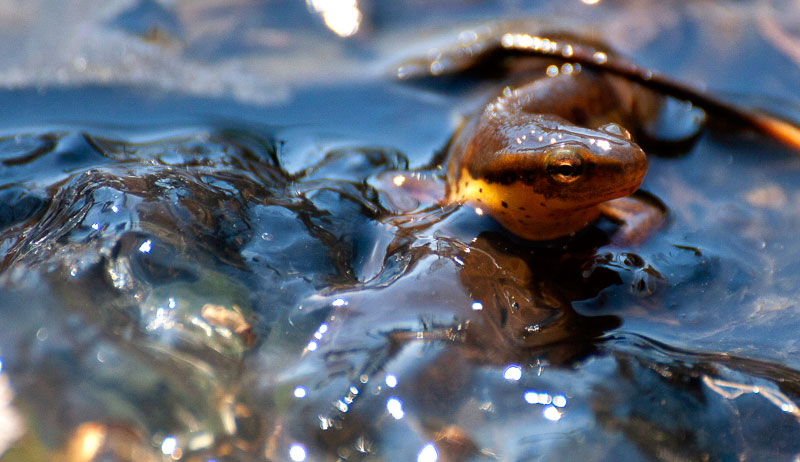
Is it a reptile or amphibian? It looks like a lizard with a long, appendage-like tail, but its skin is permeable like a frog’s. It begins life in water like a tadpole, but lives its adult life in forests. It crawls more than it swims. So, what is it? Technically, salamanders are amphibians. Their connection to water outweighs their resemblance to tough, scale-covered reptiles, even though they seem like just another variety of lizard. For salamanders, water is life.
All Anurans—salamanders, newts and sirens—must have moist skin or they will die. On very humid, moist days, you might find them out in the open. Generally, however, they hide in cool, shadowy spots. They might spend time at the edges of puddles and ponds, not to drink, but to soak up the water. Even certain types of salamander mothers wrap their bodies around their eggs for as long as two months to protect them from dehydration.
Salamanders’ Watery Start

Every salamander’s life begins in water, even if it is a terrestrial species. Species such as the redback and ravine salamanders lack an aquatic stage of life, but their eggs provide an extra watery environment that envelops the developing embryo in moisture. These types of young salamanders complete metamorphosis before hatching out as miniature versions of the adults. But these are the exceptions.
Most salamanders lay eggs in masses in vernal pools. If you come across a slimy congealed substance in a pond, you can tell the difference between frog eggs and salamander eggs by the cohesiveness of the mass. Frog eggs are often individually wrapped, in a sense, and all stuck together. Salamander eggs are usually visible as individual eggs and also covered in an extra coating that binds the entire mass together. As the seasonal pools evaporate in midsummer, the hatchlings develop lungs, which enable them to leave the aquatic nursery and venture out as terrestrial salamanders.
Various Looks and Species
A wide diversity of colors, markings, habitats and life cycles distinguish the approximately 150 species of salamanders in North America. Biologists also tell them apart by their toes. Some have claws for short climbs up stems, while others have webbed feet for paddling around. Some don’t have hind limbs at all. Most have four toes on the front and five on the back feet, but the exceptions stand out and make them easier to classify.

The Amazing Abilities of Salamanders
Salamanders are survivors. They can see well even though they have tiny eyes. Somehow they are still able to navigate really well in the dark, coming out at night to hunt snails, slugs, worms and crawling insects. By laying low, keeping out of sight and warning attackers with bright, bold color patterns, they can live more than a decade in the wild. In many species, salamanders don’t reach sexual maturity until they are at least 3 or 4 years old. Even though salamanders are resilient animals, their skin is especially vulnerable to pollution and poor water quality. Handling a salamander endangers it, particularly if you have sunscreen or hand sanitizer on your skin. You might also be harmed by handling them: Some types exude a toxin to fend off predators.
Water in its many forms makes it possible for salamanders to thrive in North America, where they occur in the larger numbers and richer diversity than anywhere else in the world. For such a special creature, relatively little is known about these amphibians. They have not been studied thoroughly and are losing ground with irresponsible development and water quality degradation. Habitat for salamanders varies. It includes wooded hills, ephemeral ponds and running streams. The key ingredient in all cases is water.
Creating Hospitable Habitats

Consider managing your property for salamander habitat. In flowing streams, rivers, and creeks, predatory fish could outcompete salamanders. In standing water such as ponds, wet prairies, swamps and bogs, predatory fish can also be a concern. Salamanders thrive better in temporary wetlands, rather than year-round standing water. Evaporation in midsummer reduces the competition for food and coincides with the salamander’s life cycle as it moves from water to land. Terrestrial salamanders lay their eggs in places such as rotting logs. In a shady garden near a water source, you can provide habitat for salamanders to find their terrestrial meals with a healthy understory. Leaf litter and fallen branches are ideal dining and mating grounds for woodland salamanders.
A publication by The Ohio State University Extension provides more detailed information about specific habitats for different types of salamanders found in the Midwest.




